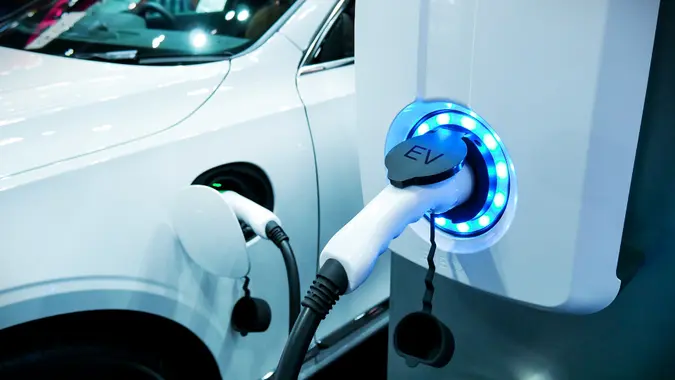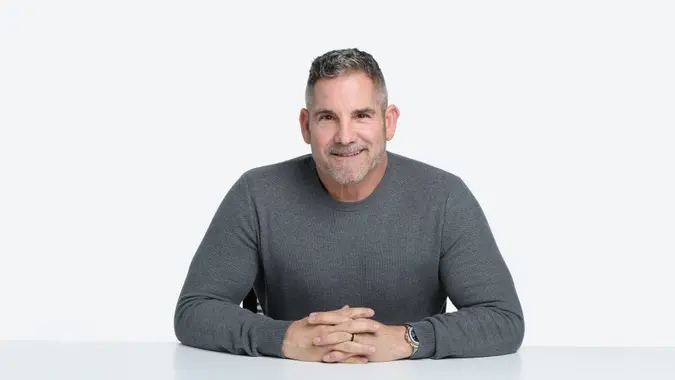Why a Tiny Tax Refund Is Good for Your Finances — and How To Make It Happen Next Year

Commitment to Our Readers
GOBankingRates' editorial team is committed to bringing you unbiased reviews and information. We use data-driven methodologies to evaluate financial products and services - our reviews and ratings are not influenced by advertisers. You can read more about our editorial guidelines and our products and services review methodology.

20 Years
Helping You Live Richer

Reviewed
by Experts

Trusted by
Millions of Readers
For many, the only light at the end of the tax tunnel is the chance you’ll get a tax refund. The average refund so far in 2025 is $3,170, nearly 4% more than the $3,050 average this time last year; whereas for taxpayers with direct deposit, the average refund is about $3,236, up 3.6% from $3,124 last year.
However, even if you’ve already collected a nice windfall from the IRS, the source of that money is actually you. If you’ve already filed or are planning to last-minute, here’s what you need to know.
Why Is Getting a Large Refund a Bad Thing?
When you get a tax refund, the government is returning some of the money your employer withheld from your paycheck on your behalf throughout the year. If they withheld too much of your pay to cover taxes, the IRS gives it back in the form of a tax refund. Don’t make the mistake of thinking that the IRS is giving you extra money — it’s all an accounting cycle that’s looking for balance.
Essentially, the American taxpayer gives the government an interest-free loan. In previous years, these funds have reached upwards of three-quarters of a trillion dollars. If you’d rather not loan the government your money for free, you can get a smaller refund by having less money withheld from your paycheck.
How To Use Your Money Better Instead of Overpaying
If you have less money withheld, you’ll keep more money in each paycheck. You can then save or invest this money so it earns you even more money.
If you look forward to that lump-sum of cash every spring, however, you can invest it in a high-yield savings account, and then withdraw the money to splurge on a vacation, new television or whatever you’d buy with your tax refund.
If you’re afraid you’ll spend the money if you have it, set up recurring automatic transfers into your savings account. It will have the same effect as withholding taxes, except you get to collect the interest on the money rather than giving the government an interest-free loan.
If you have high-interest credit card debt, you’re better off taking that money and paying down those bills.
How Do I Know If My Refund Is Too Large?
If you’re in the $1,000-plus range for your refund, you are letting the government hold onto money that could benefit you throughout the year. You can decrease your tax withholdings to reduce the size of your refund. The less money you have withheld, the more money you’ll get in each paycheck and the smaller your tax refund will be.
Just keep in mind that if you reduce your withholdings too much, you’ll end the year with an outstanding balance and you’ll be facing a tax bill in April while those around you are celebrating with their refunds.
How Do I Adjust My Withholding?
Your employer withholds your estimated tax payments from your paychecks and sends them to the IRS on your behalf. Those withholdings used to be calculated based on your income, filing status and withholding allowances through form W-4, which you must submit to your employer to change your withholdings.
To get started, gather your pay statements, information about any other income you earn and your most recent tax return and use the IRS’s Tax Withholding Estimator tool to walk you through the process.
You should also consider using the tool if you have a change in your life circumstances. This might include:
- Getting married
- Having a baby
- Adopting a child
- Change in job status for you or a spouse
- Getting a second job
- Getting a large raise
Final Take To GO
Once you’ve set up your withholdings to increase your take-home pay and reduce your tax refund, you’ll want to make a plan for that money. If you don’t pay attention, you could spend it without realizing it.
You can use the money to pay off debt, invest, or save it for a large purchase, such as home improvements, new furniture or a vacation. Essentially, you can spend it the same way people do their tax refunds.
The difference is, you can do it sooner because you don’t have to wait for the IRS to process your return and send your refund — and you’ll hopefully have a little extra money from the interest you earned.
Caitlyn Moorhead contributed to the reporting for this article.
More From GOBankingRates
 Written by
Written by  Edited by
Edited by 
























